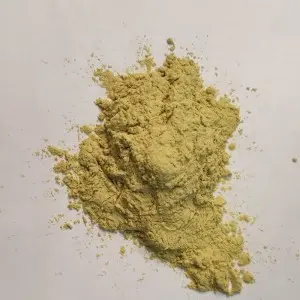Oct . 19, 2025 13:10 Back to list
Plant Pollen Supply – Pure Pollination Power, Pollen Blocks
High Quality Apricot Pollinated Pollen: field-tested gains from cross-pollination
If you work orchards for a living, you’ve already felt the shift: erratic bloom windows, fewer pollinator flight hours, and tighter quality specs from buyers. That’s why more growers are turning to plant pollen as a managed input, not an afterthought. Our take? Done right, artificial cross-pollination isn’t a gamble—it’s an insurance policy with upside.
Product spotlight: HIGH QUALITY APRICOT POLLINATED POLLEN, processed in Caozhuang Development Zone, Fanzhuang Town, Zhao County, Shijiazhuang, Hebei Province. We’ve seen seasons where natural set looked “okay,” but, to be honest, “okay” doesn’t pay the cooling and logistics bills anymore.

What’s trending in orchards
- Targeted cross-pollination to boost pack-out of premium grades.
- Cold-chain handling of plant pollen for predictable viability.
- Electrostatic sprayers and drone-assisted application (honestly, adoption varies with terrain).
- Lot-specific viability certificates and in-vitro germination data.
Process flow and quality controls
- Materials: selected donor cultivars collected at mature bud; anthers separated before dehiscence.
- Drying: low-temp air (
- Sieving: fine mesh to remove debris; purity checks under stereoscope.
- Testing: viability by in-vitro germination on Brewbaker–Kwack medium and TTC staining; moisture by Karl Fischer (where applicable).
- Packaging: nitrogen-flushed vials/sachets; tamper seals.
- Logistics: refrigerated or frozen cold chain; batch traceability and COA.
Product specs
| Product | HIGH QUALITY APRICOT POLLINATED POLLEN |
| Origin | Caozhuang Development Zone, Fanzhuang Town, Zhao County, Shijiazhuang, Hebei Province |
| Purity | ≥98% pollen grains (visual inspection, real-world may vary) |
| Viability (lab) | ≥65–80% in-vitro germination (batch COA provided) |
| Moisture | ≈6–8% |
| Storage | -18°C (preferred) or 0–4°C short term |
| Service life | Frozen ≈12 months; chilled ≈4 weeks; ambient 48–72 h |
| Application rate | ≈0.5–1.5 g/tree per event depending on bloom density |
Vendor comparison (quick take)
| Vendor | Viability (typ.) | Traceability | Cold-chain | Certs/Docs |
|---|---|---|---|---|
| JML Apricot Pollen (this) | 65–80% (COA per lot) | Full batch IDs, origin stated | Refrigerated/frozen | COA, phytosanitary; ISO refs on request |
| Local co-op blend | ≈50–65% | Mixed sources | Partial | Basic lot note |
| Generic importer | ≈40–60% | Limited | Unclear | Variable |
Applications, customization, and results
Use plant pollen for targeted cross-pollination in apricot blocks, mixed-stone orchards, greenhouse trials, and breeding plots. We provide cultivar compatibility advice, blend ratios, and timing plans (stigma receptivity window, 2–3 passes, weather-adjusted).
Field data: in paired orchards, natural matrix pollination (Garden A) delivered 60% high-grade commercial fruit. Artificial cross-pollination (Garden B) reached 75% and ≈30% higher overall yield. Many customers say quality lift matters most—the grader doesn’t lie. Real-world use may vary with weather and bloom load, obviously.
Testing, standards, and documentation
- In-vitro germination and TTC staining per horticultural best practice.
- Moisture and purity checks; optional third-party verification.
- Available docs: COA, phytosanitary certificate, ISO 9001/22000 references upon request.
Tip: keep plant pollen sealed and cold; warm only what you’ll use in the next hour. Avoid condensation; it’s the silent killer of viability.
References
-
Comprehensive Guide to CE Certification Apricot Pollen Health Benefits
NewsNov.24,2025
-
CE Certification Mango Fruit Protection Bags: Enhancing Export Quality & Sustainability
NewsNov.23,2025
-
CE Certification Varieties Suitable for Collecting Apple Pollen – Ensuring Quality & Compliance in Apple Breeding
NewsNov.22,2025
-
Comprehensive Guide to CE Certification Mango Cover Bags – Quality, Standards & Trends
NewsNov.22,2025
-
What You Need to Know About CE Certification Peach Blossom Powder Keto
NewsNov.21,2025
-
CE Certification Pear Pollen Collection Base – Ensuring Quality & Sustainability in Global Horticulture
NewsNov.20,2025